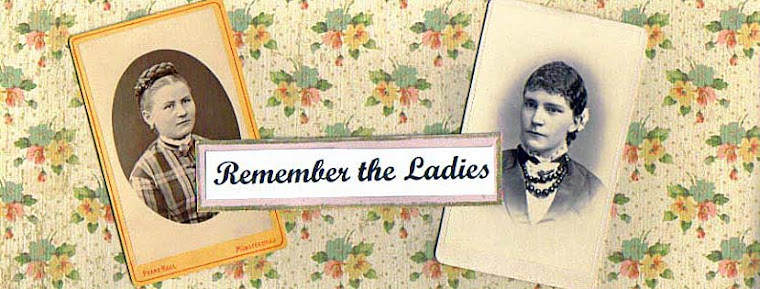Sometimes when I think about the will power it takes to fight against someone or something much bigger and stronger than we women are, it amazes me that there are those out there who refuse to budge from their beliefs. Meet the amazing Walker Sisters of the Great Smoky Mountains.
If the United States government came to you and said that they were taking the land you'd been born and lived on all of your life in order to make a national park, would you be able to look those government agents in the eye and say, "I don't think so."
That's what Martha, Polly, Hettie, Margaret, Nancy, and Louisa Walker did following the 1926 bill passed by Congress to allow the formation of the Great Smoky Mountain National Park. In 1931, property in the area was condemned, but the Walker girls didn't care. They didn't intend to move away from their 122.8 acres, and they didn't!
Of the 11 children born to John and Margaret Walker, 6 of the girls remained single, 1 married as did the 4 boys. The 6 single daughters lived their lives out in their small cabin which they kept "neat as a pin." Each year they would scrub the walls with boiling hot water before re-wallpapering it over with newspapers, magazines, calendars, and the like. Then they rehung their pictures and hundreds of items on the walls.
 |
Room Box of Margaret & Louisa Walker
along with some of their possessions.
Items pictured are from the book,
The Walker Sisters of Little Greenbrier
by Rose Houk. |
It was a simple life without electricity, gas engines, running water, or an outhouse which they felt would be too embarrassing for them because people would know what it was used for. They had all attended school through the 6th grade so they weren't illiterate. They simply liked things the way they were and had no desire to change anything.
 |
Back of room box listing the Walker Sisters, two books
about the Sisters, and a brief summary of their lives.
|
When the National Park Service sent agents to try to force the Walker Sisters into selling their land between the years of 1926 through 1940, the girls refused although at one times they did tell the agents they would sell their land for $15,000 which was far above what the agents were authorized to pay. Over the years, the girls reduced their price two or three times, but they wanted to remain on the land throughout their lives. It's been said that President Roosevelt paid the Sisters a surprise visit, and a few months later, a deal was made whereby they received $4750 and the right to live in their house for the rest of their lives.
A simple life isn't as easy as it may look. Carding, spinning, weaving, and sewing
their long sleeved ankle-length dresses was time consuming as was making their leather shoes, socks, butter, soap and shampoo. They grew over 20 varieties of apple trees and more than 100 varieties of flowers and shrubs. They also farmed, raised animals, and were knowledgeable about herbs.
In 1946 "The Saturday Evening Post" included an article about the Great Smoky Mountain National Park and the Walker Sisters which caused tourists to flock to see them. Before the girls decided to take advantage of the tourist trade, they posted a "Keep Out" sign then changing it to one saying "Visitors Welcome." They sold the tourists apples, fried apple pies, homemade soap, pinecones, nuts, dolls, quilts, poetry written by Louisa, and assorted other items which they made. As the years went by, these sales helped support them.
The first of the sisters to die was Nancy in 1931. The other 5 died during the next decades with the last, Louisa passing away in 1964. In the early 1950s, the 2 remaining sisters then 70 and 82 asked the Park Superintendent to remove the Walker Sisters sign as their health wasn't so good by then.
It's not often we hear about such independent, self-supporting women who lived lives so unchanged and found happiness without the comforts we take for granted. Although they did adopt a few of the more modern conviences of the times, they basically attempted to live good lives in the simplest way they knew how.
Rose Houk wrote a book called,
The Walker Sisters of Little Greenbrier and Bonnie Trentham Myers wrote
The Walker Sisters: Spirited Women of the Smokies. Both of these books give insight into what life was like for the amazing Walker Sisters.
So, remember the ladies.
Carol













